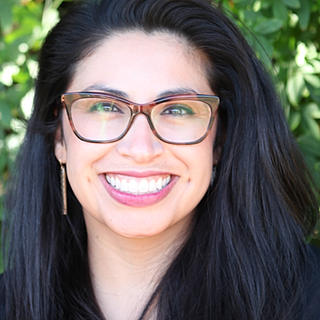Just in time for the holidays: Let's talk about BOUNDARIES
- melissaibarsotti
- Nov 7, 2022
- 4 min read
Updated: Nov 8, 2022
Written by Melissa Barsotti, LCSW, private practice therapist in San Diego, California.

First, what are boundaries? In the simplest form, boundaries are at the very least, what we learn in elementary school. Keep your hands to yourself, there is an imaginary bubble encapsulating all beings, and this is their personal space. This bubble separates us from others. Anne Katherine, author of Boundaries: Where You End and I Begin, states "we have other boundaries as well- emotional, spiritual, sexual, and relational. You have a limit to what is safe and appropriate. You have a border that separates you from others. Within this border is your YOUNESS, that which makes you an individual different and separate from others (p.15)." More specifically, however, Anne Katherine highlights we have two main boundaries, physical and emotional. Our physical boundary is marked by our skin, and our emotional limits/boundaries are guided by our age, roles, and relationships with those around us.
In the graphic below, you will see how boundaries should be navigated. Ideally, when it comes to other people, we must ask for permission to talk about a topic, to share a comment or opinion, to give a hug or other form of physical contact. In this graphic you will see the individual in the center of the three circles. This is the circle of control. This is also helpful in reminding ourselves what to let go of when we are overwhelmed by our worries and thoughts. We can choose to let go of all that we are not in control of. The second inner circle is the circle of influence. We can ask for permission to influence others or impact others in any way. Others should also be asking for our permission to touch us or speak to us on any matter or subject.
An example of asking for permission includes something as simple as hugging relatives. I will make it a priority to remind myself that my 3 year old son should be asked if he wants to hug his grandparents. My son is an individual, has a voice, and will say "no thank you." I remind myself that if my son can say "no thank you" to me and to our family, then he will have the voice to say "no thank you" to others, when we are not around to protect him.

Now, let's talk about boundary violations. Anne Katherine identifies violations of intrusion and violations of distance. Violations of intrusion occur when physical or emotional boundaries are intruded upon. Examples include the following: rape, physical abuse, screaming at others, inappropriate personal questions, and attempts to control how others think/feel/act. Distance violations occur when intimacy or closeness is LESS than what is appropriate or expected of the relationship. It is important to know that context is key. Examples of distance violations include emotional neglect. Imagine a young child whose parents are consumed with whatever it is they are consumed with, failing to engage their child, failing to tune into their child's emotional and physical needs. Failing to provide interest, guidance, affection, concern, and safe physical contact are all examples of distance violations. The example I provided earlier about my 3 year old needing to be asked if he could be hugged, is different in the following context. When my son is crying, I will come close and hug him. If he pulls away, then I will respect that; however, hugging/holding, providing safe physical affection in this instance is appropriate.
Navigating boundaries is not easy. Boundaries can be too inflexible or too rigid. Healthy boundaries "protect without isolating, contain without imprisoning, and preserve identity while permitting external connections (Katherine, A. 1991, p. 130)."
I grew up with both enmeshed and rigid boundaries. Enmeshment in it's simplest explanation is when individuality is not respected. Enmeshment occurs when feelings, thinking, and behavior is expected and determined by another, such as a parent, friend, or partner. I was expected to think, feel, and act like my father. My individuality was ignored and not encouraged. I was expected to gauge my parents' facial expressions, looking to see if they needed to be attended to, to be made to feel better. I was raised to be a caregiver and a people pleaser. Boundaries were also rigid in my home. I was basically grounded for life. If I was invited to any social event, my father's response would be "no." My father limited the influence others had on our family.
If you were raised with poor boundaries, please grant yourself some grace and compassion as you learn about appropriate boundaries for yourself. In my late 20s and 30s, when I first was attempting to have a self, I found that I enjoyed provocative conversation. Looking back, I see that I committed so many violations of intrusion, asking questions of others that were not appropriate to the relationship we had.
Please feel free to recommend any other educational books on boundaries. Please also reach out with any feedback on this blog. Boundaries are very personal. If you disagree with anything in this blog, please kindly share your thoughts in a respectful manner. I am always looking to grow and learn. Thank you kindly for reading. Enjoy your loved ones this holiday season.
Recommended Books on This Topic:
Beattie, M. (1992). Codependent No More: How To Stop Controlling Others and Start Caring for Yourself. Hazelden Publishing.
References:
Covey, S.R. (1989). The 7 Habits of Highly Effective People: Powerful Lessons In Personal Change. Simon and Schuster.
Katherine, A. (1991). Boundaries: Where You End And I Begin. Parkside Publishing Corporation.
.png)




Comments